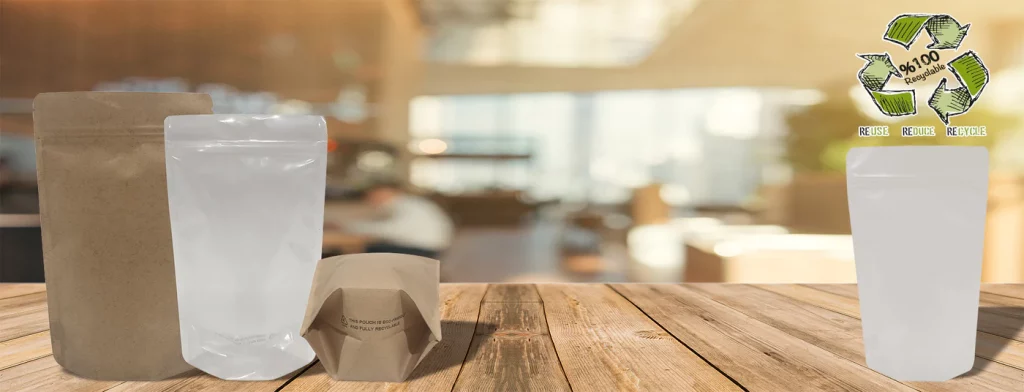introduzione
In today's world, where environmental concerns are at the forefront, packaging plays a significant role in shaping sustainable practices. Biodegradable packaging has emerged as a promising solution that addresses the detrimental impact of traditional packaging materials on the environment. This article explores the future of packaging, focusing on the potential of biodegradable options.

What is Biodegradable Packaging?
Biodegradable packaging refers to materials that can decompose naturally and safely, returning to the environment without leaving behind harmful residues. Unlike traditional packaging materials, such as plastics, which can persist in the environment for hundreds of years, biodegradable packaging offers a more sustainable alternative.
Advantages of Biodegradable Packaging
- Environmental Friendliness: Biodegradable packaging significantly reduces waste accumulation, greenhouse gas emissions, and energy consumption during production.
- Resource Conservation: Biodegradable materials often come from renewable sources, reducing the reliance on non-renewable resources.
- Reduced Pollution: Biodegradable packaging minimizes pollution from plastic waste, particularly in marine ecosystems.
Types of Biodegradable Packaging
- Bioplastics: Derived from renewable sources like cornstarch, sugarcane, or cellulose, bioplastics offer similar functionalities to conventional plastics but with better environmental credentials.
- Paper-based Packaging: Packaging made from responsibly sourced paper and cardboard is biodegradable, recyclable, and often compostable.
- Mushroom Packaging: Utilizing mycelium, the vegetative part of fungi, mushroom packaging provides an eco-friendly alternative that can be molded into various shapes and decomposes naturally.
Innovations in Biodegradable Packaging
- Edible Packaging: Edible films made from natural ingredients like seaweed are being developed, providing a sustainable and edible solution to single-use packaging.
- Nanotechnology: Nanomaterials are being explored to enhance the biodegradability and barrier properties of packaging materials, extending their shelf life.
- Smart Packaging: Incorporating sensors and indicators into biodegradable packaging enables real-time monitoring of product freshness and quality, reducing food waste.
The Impact of Biodegradable Packaging on the Environment
Biodegradable packaging offers several environmental benefits. By reducing waste accumulation and plastic pollution, it helps protect ecosystems, marine life, and human health. Additionally, the use of renewable resources and energy-efficient manufacturing processes contribute to a more sustainable future.

Challenges and Limitations of Biodegradable Packaging
- Lack of Infrastructure: Adequate waste management systems and composting facilities are necessary to fully realize the benefits of biodegradable packaging.
- Cost: Biodegradable packaging materials often come at a higher cost compared to conventional options, limiting their widespread adoption.
- Performance Considerations: Some biodegradable materials may have limitations in terms of durability, barrier properties, and shelf life, requiring further research and development.
Consumer Perception and Adoption
As consumers become more environmentally conscious, the demand for sustainable packaging solutions is on the rise. Biodegradable packaging aligns with consumers' values, and companies that embrace it can enhance their brand reputation and attract eco-conscious customers.
Industry Adoption and Regulations
Various industries, including food and beverage, personal care, and e-commerce, are recognizing the importance of sustainable packaging. Governments and regulatory bodies are also introducing measures to promote the adoption of biodegradable options, such as levies on single-use plastics and incentives for eco-friendly alternatives.
Future Trends and Developments
- Advanced Materials: Continued research and development will lead to the discovery of novel biodegradable materials with improved performance and cost-effectiveness.
- Circular Economy: The integration of biodegradable packaging into a circular economy model will facilitate the recycling and reuse of materials, reducing waste.
- Collaborative Efforts: Collaboration among stakeholders, including manufacturers, retailers, and consumers, will drive innovation and accelerate the adoption of biodegradable packaging solutions.
Case Studies: Successful Biodegradable Packaging Solutions
- Loop: A global reuse platform that partners with brands to offer reusable packaging, reducing single-use packaging waste.
- Ecovative: A company that produces mushroom-based packaging materials, providing a sustainable alternative to polystyrene foam.
Conclusione
Biodegradable packaging represents a promising future for sustainable packaging solutions. Its environmental benefits, coupled with increasing consumer demand and industry adoption, pave the way for a shift towards more eco-friendly packaging practices. By embracing biodegradable options, we can reduce our ecological footprint and create a healthier planet for future generations.
FAQ
- Is biodegradable packaging truly environmentally friendly? Biodegradable packaging offers significant environmental benefits compared to traditional materials. However, it is essential to consider factors such as waste management infrastructure and material sourcing to ensure its overall sustainability.
- Are biodegradable packaging materials more expensive? In general, biodegradable packaging materials tend to be more expensive than conventional options. However, as technologies advance and demand increases, prices are likely to become more competitive.
- Can biodegradable packaging replace all types of plastic packaging? While biodegradable packaging presents a sustainable alternative, it may not be suitable for all applications. Some products require specific barrier properties or durability that biodegradable materials may not offer.
- How can consumers contribute to the adoption of biodegradable packaging? Consumers can support the adoption of biodegradable packaging by choosing products packaged in sustainable materials, properly disposing of packaging waste, and advocating for eco-friendly practices.
- What role does government regulation play in promoting biodegradable packaging? Government regulations play a crucial role in encouraging the adoption of biodegradable packaging. Measures such as levies on single-use plastics and incentives for sustainable alternatives drive industry-wide changes and consumer behavior.